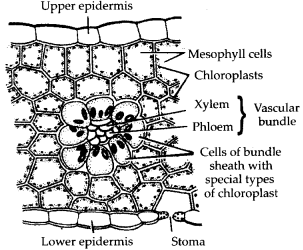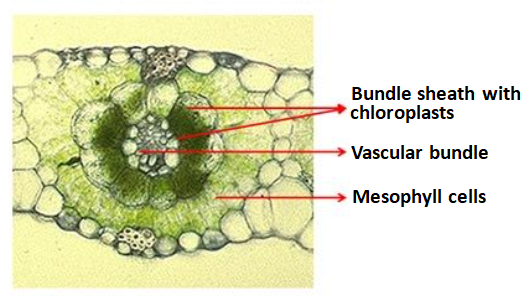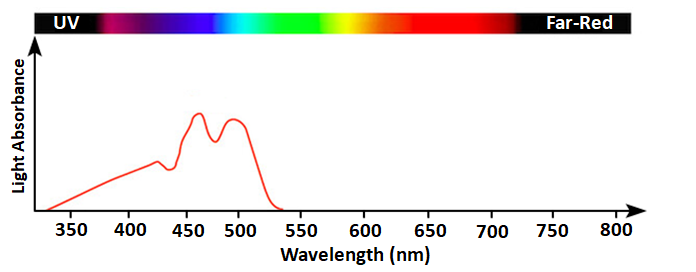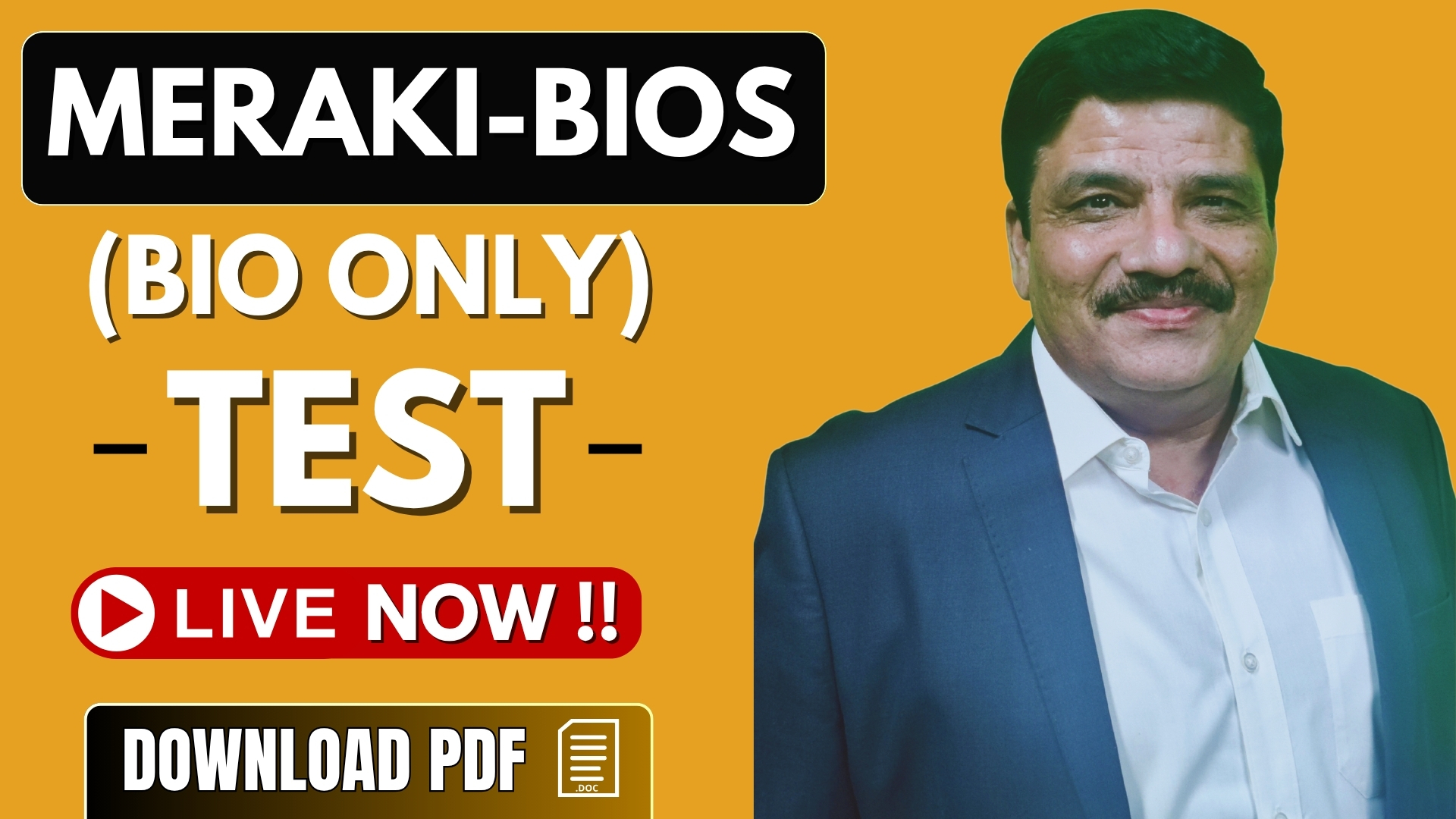| Assertion(A): | Plants photosynthesise during the day, whereas they respire at night. |
| Reason(R): | Photosynthesis can occur in the presence of sunlight whereas respiration cannot. |
| 1. | Both (A) and (R) are true and (R) is the correct explanation of (A) |
| 2. | Both (A) and (R) are true but (R) is not the correct explanation of (A). |
| 3. | (A) is true but (R) is false. |
| 4. | Both (A) and (R) are false. |
Chloroplasts:
| I. | have their own DNA and make all proteins needed by them |
| II. | have a uniparental inheritance |
| III. | cannot be made by the plant cell |
| 1. | Only I and II are correct |
| 2. | Only I and III are correct |
| 3. | Only II and III are correct |
| 4. | I, II and III are correct |
The pH of the space of thylakoid of isolated chloroplast is decreased and then transferred in the dark to a pH-8 solution. The result would most likely be:
| I. | The isolated chloroplasts will make ATP. |
| II. | The Calvin cycle will be activated. |
| III. | Cyclic photophosphorylation will occur. |
| 1. | Only I |
| 2. | Only I and II |
| 3. | Only I and III |
| 4. | Only II and III |
The following diagram shows bundle sheath cells with “special” types of chloroplasts. What is special about them?

| 1. | They are larger than normal size |
| 2. | They are agranal |
| 3. | They are dimorphic |
| 4. | Calvin cycle cannot take place in them |
The absorption spectrum shown in the given figure can be of:
1. Chlorophyll a
2. Chlorophyll b
3. Carotenoids
4. Either 1 or 2
Emerson's enhancement effect and red drop have been instrumental in the discovery of
1. two photosystems operating simultaneously
2. photophosphorylation and cyclic electron transport
3. Oxidative phosphorylation
4. photophosphorylation and non-cyclic electron transport
Robin Hill discovered that the isolated chloroplasts from plants can release oxygen when they are illuminated by sunlight in the presence of a suitable electron acceptor. This showed:
| I. | oxygen \((O_2)\) is produced by a reaction that is separate from carbon dioxide \((CO_2)\) fixation. |
| II. | the reaction in which oxygen is released requires light. |
| III. | the light dependent reaction of photosynthesis is a result of a series of redox reactions. |
| 1. | I and II only |
| 2. | I and III only |
| 3. | II and III only |
| 4. | I, II and III |
| Assertion(A): | When simultaneously exposed to light of both red and far red wavelengths, the rate of photosynthesis is far higher than the sum of the red light and far red light photosynthesis rates. |
| Reason(R): | Two photosystems, processing different wavelengths, cooperate in photosynthesis. |
| 1. | Both (A) and (R) are true and (R) is the correct explanation of (A) |
| 2. | Both (A) and (R) are true but (R) is not the correct explanation of (A). |
| 3. | (A) is true but (R) is false. |
| 4. | Both (A) and (R) are false. |
What conclusion can be drawn from the finding that while some bacteria have only photosystem I, cyanobacteria have both?
| 1. | Photosystem II was lost in some species as it was selected against by the nature. |
| 2. | Photosystem I must be more ancestral. |
| 3. | Photosystem II may have evolved to be more photoprotective. |
| 4. | Cyclic photphosprolylation is more important than non cyclic photophosphorylation. |
| Assertion(A): | The enzyme phosphoglycerate kinase[PGK] is present in all living organisms. |
| Reason(R): | In the Calvin cycle, PGK catalyzes the phosphorylation of 3-PG, producing 1,3-BPG and ADP, as part of the reactions that regenerate ribulose-1,5-bisphosphate. |
| 1. | Both (A) and (R) are True and (R) is the correct explanation of (A) |
| 2. | Both (A) and (R) are True but (R) is not the correct explanation of (A). |
| 3. | (A) is True but (R) is False. |
| 4. | Both (A) and (R) are False. |









